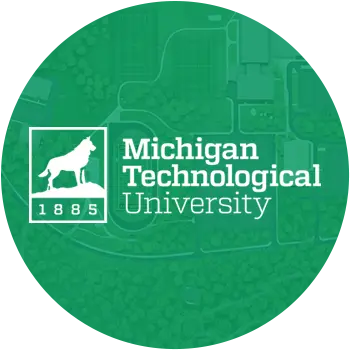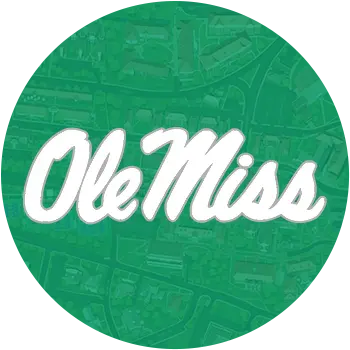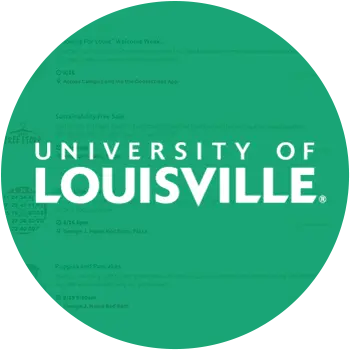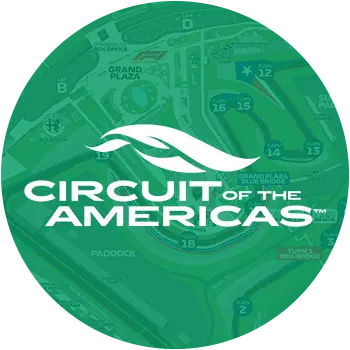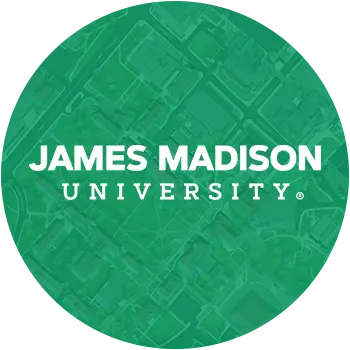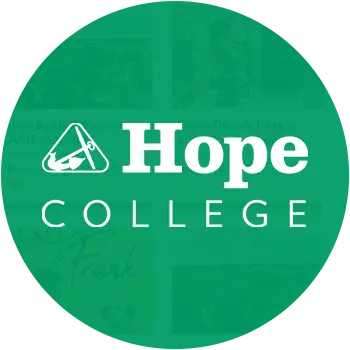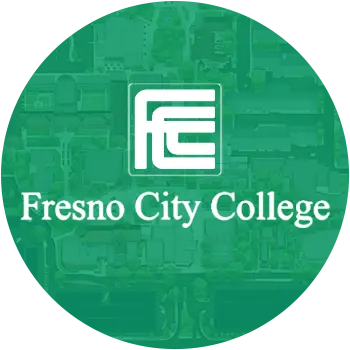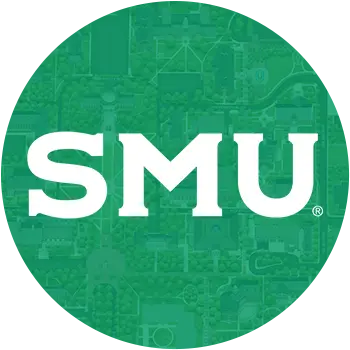Blog Recap:
Being a chief marketing officer (CMO) in higher education is no walk in the park. You’ve got to deal with putting out fires left and right, all while trying to keep your eye on the prize: killer marketing strategies. In this blog post, we’re diving into the nitty-gritty of what it takes to be a rock star CMO, straight from the mouth of Jamie Hunt, a seasoned pro in the game.
Juggling Act: Crises vs. Strategy
One of the biggest headaches CMOs face is trying to balance the urgent stuff (like that PR nightmare that just popped up) with the important stuff (like crafting a marketing plan that’ll knock everyone’s socks off). Jamie Hunt’s advice? For bigger schools, it might be worth having a dedicated crisis manager so the CMO can focus on the big picture.
Enrollment Cliff: Time to Buckle Up
The enrollment cliff is coming, and it’s not pretty. Smaller, rural schools are gonna feel the heat the most. To keep your head above water, CMOs need to buddy up with their enrollment team, get creative with recruitment strategies, and make sure everyone knows just how valuable a college degree really is.
Digital is King
Let’s face it, today’s students are all about that digital life. CMOs need to make sure their school’s online game is on point. That means a slick website, killer social media, and ads that pop up right where your future students are hanging out.
Playing Nice with the Higher-Ups
CMOs have to be masters at managing the pressure from the big bosses and building relationships across the board. Jamie Hunt’s pro tip? Make sure you’ve got a stellar reputation on campus and keep those communication lines open with your enrollment crew.
Being a higher-ed CMO isn’t for the faint of heart, but with the right moves, you can totally crush it. Focus on finding that balance, tackling the enrollment cliff head-on, embracing the digital world, and being a relationship-building rockstar. You’ve got this!
Read the transcription:
Shiro:
Hello, everyone. Welcome to the Higher Ed Demand Gen podcast hosted by Concept3D. So if you like our content, please subscribe to us or follow us on Spotify, Apple, and Google. My name is Shiro Hattori, and I am your host today. And, today, I’m really excited to to share some very new news that we’ve finally reached an amazing milestone, which is episode 100. I can’t believe that went by actually that fast, and I’m so grateful for everyone who has joined on as a guest. It’s been a fantastic ride. I tell all my guests this publicly, but this is my favorite part of my job as a marketer for Concept3D.
Shiro:
I get to talk to people who are passionate about higher ed and and their jobs, and it gets me fired up to, you know, do my job as a marketer within the Concept3D, company. And so, I’m just so grateful for everyone who has joined so far, and I’m so happy to reach this 100th episode milestone. And for that, I’m super excited to have Jamie Hunt as our 100th episode guest. I’ve I’ve seen Jamie’s post on LinkedIn just explode. I think she’s an amazing writer, especially short form writing, which is is kind of the play on LinkedIn, but I’ve just seen her, so many times on LinkedIn through mutual connections. And, you know, I just thought I’d it’d be so amazing to have her on as my 100th episode guest. Jamie is the host. If you did not know, the host of the confessions of a higher ed CMO, she’s now newly the president of the solve higher ed marketing company.
Shiro:
She also has over 20 or, actually, exactly 20 years of experience serving in leadership and CMO roles at multiple institutions, most recently at Old Dominion University. And so with that, Jamie, welcome to the show.
Jamie Hunt:
Thank you so much. I’m so happy to be here for your 100th episode. Congratulations.
Shiro:
Thank you so much. And I do ask all my guests this. So, Jamie, please tell me what you love about higher ed.
Jamie Hunt:
I love how higher ed transforms lives. And when I think about what I have been so lucky to have in my life in terms of, like, a fulfilling career and, you know, a great life, it’s all because of my degrees and the education that I got. And I love seeing all these young people, and even nontraditional students, sort of, on the precipice of what is next in their life. And that’s my favorite thing about higher ed. It’s just being around all this energy and enthusiasm for what the future has in store for our graduates.
Shiro:
Thanks so much for sharing that. Yeah. I I hear this answer a lot, and I think everyone that I’ve had on the podcast just, you know, has that same energy because I think they feed off of the students and and the the community. So it’s fantastic. Well, can you tell us a little bit more about you know, you said 20 years of experience serving in higher ed. Can you tell us a little bit more about your career? And also specifically because, you know, I’m a podcast host, can you tell us more about why you started the confessions of a higher ed CMO podcast as well?
Jamie Hunt:
Yeah. So after working in journalism for 5 years, I decided I needed to make slightly more money. And I say slightly more because we all know higher ed doesn’t pay that that well either. But I was looking for an industry where I could look in the mirror and be happy with what I was quote, unquote selling. And so I started, my job search looking at nonprofits and higher education. And I got my first job as a PR coordinator in higher education in 2004. And I’m so happy that I found that field, as early as I did in my career, and that I’ve been able to make a 20 year career in higher education. So I started out in PR, ended up pivoting and to include marketing in my portfolio, and then pivoting again to include web and digital strategy in my portfolio, and then pivoted again and had government relations and public And so now I have been And so now I have been the chief marketing communications officer at 3 institutions, Winston Salem State, which is an HBCU in North Carolina, Miami University, which is a selective public university quite large, in Ohio, and then, Old Dominion University, which is an r one public with now a medical school.
Jamie Hunt:
So it’s been a broad swath of types of institutions, but, it’s been really, really fun. When I started my podcast, it was about two and a half years ago, Zach Buzacruz, who ran in Rollify at the time, said that he was looking for hosts for podcasts, and my name kept coming up. And I think it kept coming up because I’m was sort of the queen of spicy takes on Twitter. So I’ve migrated from Twitter over to LinkedIn where I’m also a spicy take haver as you alluded to. But I saw it as an opportunity to share some of the knowledges and experiences that I’ve had over my career and to bring in guests that I can also learn from. It’s, you know, it’s like a secret, like, oh, I’m having you come in to talk about this, but I always take something away, even if it’s a topic that I’m super well versed in. But I really wanted to give the higher ed community an asynchronous way to learn, about some of the really important topics that we face as higher ed marketers. And that was sort of the genesis of it.
Jamie Hunt:
We we decided, to call it Confessions of a Higher Ed CMO because of that sort of spicy take history I had, where I’m kind of making a confession, in each episode and then bringing a guest to talk about a topic. And it’s been it’s been fantastic. I’m I’m at, as of this point, I’ll be over 30,000 downloads of the podcast, which I’m really proud of and grateful for the listenership for.
Shiro:
Wow. That’s amazing. You said 30,000?
Jamie Hunt:
30,000. Yep. I just passed that milestone, and I’m very, very excited and proud of that.
Shiro:
Congratulations. Yeah. That’s it’s super interesting. I think your podcast started maybe half a year before this one. So that’s great. It’s it’s explosion of now. I feel like there’s so many out there now, but, yeah, that’s that’s amazing. And, just, you know, speaking of the challenges that CMOs face and the confession that they make, you know, are there are there some common themes, that are currently happening with CMOs and the challenges that they face?
Jamie Hunt:
Yeah. I would say that the number one challenge facing CMOs is the CCO part of the job, so the chief communications officer part of the job. So many campuses, the majority of campuses have those as one role. And I totally get why, and I’ve been in that one role at every institution that I’ve been a CMO at. But it’s super easy for crisis to pull us away from marketing. And it’s like the urgent pulls us away from the important. And sometimes the urgent is important, but sometimes the urgent is like somebody spotted a rat in a residence hall room, and your whole week can be upended over a rat in a residence hall. Right? And that is taking your eye off of enrollment marketing and really relying on your team to continue to drive that forward where you’re writing statements about a rat.
Jamie Hunt:
You know? And then there’s the bigger crises that take up so much more time, reputational or life safety crises. And it can be super challenging to kind of balance the urgent with the important, and it it makes it such a difficult job to keep those 2 sort of halves working together. I also think that the challenges of the enrollment cliff, which I’m sort of tired of hearing about, we were actually talking about this, about the enrollment cliff when I started in higher ed, and and it seemed so far away. And I didn’t think there was any chance I would still be in higher ed when I got here. But the enrollment cliff and the pressures of enrollment and whether or not you have a good relationship with your chief enrollment officer can make or break the job. I’ve been really lucky to have great relationships through my career with the chief enrollment officer, but I’ve also talked to so many CMOs that don’t have good relationships, and that just makes the job that much harder and and that much more challenging. So those are some of the things that I see as being, like, those really big, barriers to success.
Shiro:
And and so I know I know there’s many different sizes of schools, and so it may change depending on that. But you’re saying that, like, the CCO row is almost better if it’s separated or segmented out just because it’s such a big responsibility in its own. Is that kind of your suggestion or a a take that you’re you’re saying?
Jamie Hunt:
For some campuses, I think it makes sense, particularly for larger schools and schools that have I I I think flagship universities where the scrutiny is just so intense, where you have the whole public in the state are, like, this is my university even though I don’t didn’t go there. I don’t have kids that go there, but it’s my university. I think those campuses really need someone, whether it’s, like, an AVP that reports to the VP or something, but someone who can really be dedicated to the crisis and not have it pull them away from brand work or enrollment marketing work or the other important marketing type, things that need to be done. It won’t work for every campus, but I think some campuses need to be considering it. If you have a very crisis prone campus, it’s something to think about.
Shiro:
Got it. And I know you you brought up the urgent and important, these words. I’m I’m assuming you’re a fan of, like, the quadrants and the how you categorize how to work on things as a marketing team and categorize how to work on things as a marketing team, and I I believe the sweet spot is, not urgent, but important. Right? Like, working in that in that box is, like, what drives things forward versus reactionary. Is that right?
Jamie Hunt:
Yeah. Well, being able to be proactive is super, super critical. And if you’re working on urgent but important, you’re working on important stuff, but you’re usually doing it in a reactive way. So definitely that quadrant of it’s not urgent. You’re able to plan. You’re able to use strategy and be proactive, versus, you know, working in a space where you’re just, like, reacting to something, I think is always better. So I love those quadrants. If it’s not urgent and not important, don’t do it.
Shiro:
Yes. Definitely. I need to bring those back a little bit more to my life too, just outside of work as well. You mentioned, more about you know, you’re you’re sick of hearing the enrollment cliff. Like, I’m I’m sure it’s because you’ve heard it a lot, but what are your thoughts on, you know, 2025 enrollment cliff? You know, it’s still a topic that comes up in every podcast call that I have pretty much whether it’s offline or during the actual conversation. But, like, where do you think the shift is going, right now?
Jamie Hunt:
I think right now in terms of I hate I even hate the terms enrollment cook. I think we’re seeing a couple different things. We’re seeing the shift in, the decrease in the number of high school graduates. Right? But we’re also seeing a demographic shift where fewer and fewer of high school graduates are white. And it’s like, well, that shouldn’t be a problem. Right? Because we should be able to recruit nonwhite students as well as we recruit white students. However, we know that there are so many systemic barriers in the way for nonwhite students, that it’s like we have we should have 20 years ago, 30 years ago, 50 years ago, figured that out. But the reality is we haven’t.
Jamie Hunt:
And so that’s a challenge. Looking at, also the kind of declining perception of the value of higher education, I am deeply concerned for particularly rural institutions, that are not places like Virginia Tech. Like, the rural institutions that are maybe, like, you know, a second tier school in a state, a comprehensive. Because the students in rural areas, white students in rural areas are making the decision more and more often to not enroll in college. Well, what are the bulk of the population of those rural schools? It is students from rural areas. And so I think rural schools that’s a funny word to say, rural schools, are right, are are really gonna have some struggles along with those smaller private schools. And I think the scrutiny on the value of higher education is gonna be very, very difficult for private schools to overcome because the sticker shock honestly, if you can look at, say, one institution in your state that is a public university, maybe it’s not the flagship, but it’s like, you know, a a a second tier in your state, or where you can pay, maybe it’s 15,000 a year. Or you’re looking at a private school in or out of state, and it’s, you know, 30 to 60,000 a year.
Jamie Hunt:
A price conscious family is going to choose that state university, hands down. And so I think we need to be thinking as marketers about how to overcome price consciousness and be talking about value and what the value of higher education is, but also what the value is of it at the private institutions. And so if you’re a higher ed marketer at a private school and you’re not thinking about how to communicate to price conscious people, I think you’re gonna be in a real world of hurt pretty soon here.
Shiro:
Got it. Yeah. I mean, these are all amazing points, and it’s something that comes up continuously. Like, I know the it’s like the elephant in the room that no one wants to talk about, and I’m glad that, you’re now on the non institutional side. Right? You’re doing consulting, and so I think it’s a little bit easier to to talk about. But, yeah, often, it’s like feel like there’s an elephant in the room, and, you know, the messaging has to address it sometimes because it is I mean, we’ve done surveys internally at Concept 3 d and, you know, finance financial reasons or financial aid is usually, like, number 1 or 2 position on, admissions or application related questions. And so, it’s it’s it’s completely true, and it’s there. So I completely agree.
Shiro:
Go ahead. Sorry.
Jamie Hunt:
Oh, I I worked at a institution where the president did not want tuition and fees to be in the drop down menu. They wanted it to be hard to find. And I was trying to explain to that president, like, this this is a big investment. Right? Like, you’re talking about tens of 1,000 of dollars, potentially 15 to 30 years of debt, And we’re not being upfront about our pricing. And this was not at a private institution. This was at a, actually, really affordable public university. And so I’m just I think, like, with that mentality, we’re not speaking to to the gen alphas, that are coming up who have very price conscious parents.
Shiro:
That’s great. And, yeah, this actually reminds me. I I was speaking with Seth O’Dell, which I know you cohost a little bit with as well. And we were talking about how, students are now sending applications after figuring out, you know, what the sticker price is versus, like, before it was kinda like in my generation, at least, we applied to a lot of schools, and then the the sticker price was kind of formed an afterthought. Now it’s coming before the application process, and then people are being a little more selective. And with that’s, you know, changing the whole dynamic of the actual in person campus visit as well. It’s now being done later in in the student life cycle versus earlier on, which is something Seth and I talked about as well. And so I feel like, yeah, the the large sticker price plus, you know, the change in in digital has shifted, like, the whole student journey during the application process.
Shiro:
So it’s super interesting to look at.
Jamie Hunt:
For sure.
Shiro:
Well, great. I I actually had some questions, you know, with your experience in leadership marketing roles and CMO roles. How do you how do you deal with the the pressures that come from executive or leadership above you? Like, I know, you know, you’re have having to wear multiple hats. Right? Some your some roles are responsible for that CCO, responsibility, like you mentioned earlier. Like, do you have any advice or tips around how to deal with the pressures or even how to communicate things so that you’re not always just, you know, trying to face all these burdens.
Jamie Hunt:
Dealing with the pressures from above is such a case by case basis based on the personality of your leadership. So there’s some leaders that are very, I want to hear from you when you have concerns. I want to, help you solve problems. And then there’s other presidents who are like, I hired you to solve all the problems. Go solve the problems. But I think one thing that I strongly recommend that people do is think about their personal brand, and not just their brand out in the world and on LinkedIn, but their brand within their institution. When you have pressures coming from above, when people are talking about you in rooms that you’re not in, you want them to say good things about you. And they want you want them to say, you know, yeah.
Jamie Hunt:
We have these pressures, but I think, Jamie’s got it. I think Jamie’s got a good path forward. And so thinking about how you can build relationships across your campus with other leaders who are going to be in the same room, with your leadership, and others across your institution who have influence and say, I think it’s really really smart. Because you you need those people to be advocates for you, advocates for your department, advocates for the work that you’re doing in those meetings with that leadership that might be trying to blame you for all the things. And then no matter what it takes, honestly, a lot of the pressures are coming from enrollment right now. If you do not have a good relationship with your enrollment leader, get a good relationship with them. Eat whatever crow you have to eat. Apologize for things you didn’t do.
Jamie Hunt:
Whatever it take people out to coffee, drinks, beer, whatever, but build that relationship and build that trust with your enrollment leader. Because you need to work hand in glove. You don’t want the situation where when there’s a class that comes in that’s better than expected, it’s all because of admissions. And when there’s a class that comes in that’s worse than expected, it’s all because of marketing. You want there to be a we’re in this together attitude, And sometimes that means you have to be the bigger person and apologize for things if you had, you know, some difficulty in a relationship, or to reach out the olive branch if you’ve had difficulty and try to bridge that gap. And I know it’s really hard, and I’ve been really lucky to work with great leaders where I haven’t had to do that that much. But I don’t wanna out anybody, but I have had to do that on some level, and it makes such a difference once you feel like you’re all in it together and you have each other’s backs.
Shiro:
It’s amazing. I feel like I got that sound bite for a confession just there. Yes. You did. That was fantastic. Wow. That’s great. Okay.
Shiro:
Well, yeah, you heard it there. Make make better friends with your enrollment teams. That’s fantastic.
Jamie Hunt:
For sure. I’m giving a keynote in November on that topic, because I I just think that it’s so important.
Shiro:
That’s great. Well, shifting gears, I mean, we’ve gone over a lot of, you know, the challenges that CMOs face, CCOs face. Can we talk a little bit more about this new path in your life, which is, starting solve higher ed marketing?
Jamie Hunt:
Yeah. So, I last fall, I started thinking about how I could have a bigger impact on higher education. I wanna give a little bit of credit to the Academy For Innovative Higher Ed Leadership because it really got me thinking about where I could make the most change in higher education. And so since about November of 2023, I’ve been kinda quietly hatching this plan to launch my own consultancy where I can help a lot of in universities move forward versus just the one institution for which I work, moving that institution forward. And so, I launched the the company officially on May 6, 2024, and, that was one of the scariest days ever. I had resigned my position in February, and the president had asked me to stay till the end of the fiscal year so that he could hire somebody and not have a gap since I wasn’t taking a different job. I was able to do that. But when I made the big announcement, it was like, there’s no going back right now.
Jamie Hunt:
This is what I’m doing. And so I launched it on May 6th, and, it has gone so well. I’ve been, so pleased with the reaction and with the folks that have hired me. And I’m working with, I think I have 5 or 6 campus clients at this point, which is more than I expected to have already. And I don’t know if you wanna get into kind of what the work is that I’m doing or not.
Shiro:
Yeah. Absolutely. I mean, first off, congratulations. That’s Thank you. An amazing milestone. How are you feeling on May 5th 6th? Like, I know you said it was the biggest thing you’ve ever done, but, yeah, just crazy amount of emotions, like, up and down, up and down.
Jamie Hunt:
I didn’t sleep the night before my husband I took the day off, when I made the announcement. I didn’t sleep the night before. And I was like, what if I put this out there and no one reacts? I hear from no one. I get no reaction to it. My husband was like, good grief. What are you talking about, girl? Like, that’s not gonna happen. And so I was just completely anxious. But then when I immediately started getting positive feedback and reaction, I haven’t stopped smiling since that day because I’ve been it’s been such a validation that I made the right choice and that, I’m I’m doing what needs to be done.
Shiro:
That’s awesome. And, yeah, I’d love to hear more about the the work you’re doing as well. You said you already have a couple, campus clients, which is amazing.
Jamie Hunt:
Yeah. So part of my business is doing things like keynotes, public speaking, and training. So I have, some of those. But in terms of working with campus partners, I’m doing, organizational assessment. So looking at an org structure, for an institution and evaluating what might make the most sense. Or I also have a client where I’m working with them, they’re centralizing. And what does centralization look like for their campus? Because there’s no one size fits all solution for that. So that’s some of what I’m doing.
Jamie Hunt:
I’m also doing a lot around crisis communications. I think preparation is super important. So I’m doing audits of crisis communications plans and then crisis communication boot camps. I find a lot of the VPs in higher ed right now have come from marketing, and they don’t have a crisis communications background. And one of my clients was, like, I was just sweating. Like, my first crisis, I was, like, what am I doing? I don’t know what I’m doing. And I’m my goal is to help them feel more prepared and ready to tackle whatever comes at them this fall. So I’ve been doing a number of those.
Jamie Hunt:
And then I’m also doing things like, branding projects where maybe there’s a institutional brand, but a college or a division of the university needs a sub brand within that that their main campus can’t get to. And so I’m working with their CMO on developing a sub brand for their, that unit or college. And then a big piece of my work, and something I’m really passionate about, is doing student journey mapping. So mapping what the student journey is in in the case of one of the clients I’m working with right now, from the time they’re admitted through the end of their 1st year to help impact yield, anti melt, persistence, and retention. And I’m really passionate about persistence and retention, getting students from fall to spring, and then from spring to their 2nd year, because so we lose so many students in the after that 1st year. And so how can we be communicating better, particularly to 1st generation and underrepresented students to help them navigate that process to get from the time they’re admitted through that whole 1st year. So I have some projects with that. But I’m also looking into doing some fractional CMO work, and and things like that too.
Jamie Hunt:
But the the projects I have right now, I’m really excited about and and happy to be working on with with the campus partners I have.
Shiro:
That’s fantastic. And do you have a team? Are you just solopreneuring at the moment?
Jamie Hunt:
I am solopreneuring at the moment. I feel like after the last, 9 years, it’s nice to not be responsible for for, HR ish issues right now. But I am definitely looking for people to partner with for some of the bigger projects, like if I need to bring in a writer, if I need to bring in a designer, that kind of thing. And I’m not ruling out growing this into a larger agency. I just I’m kind of trying to float and feel and see how it goes. And and I’m not much of a this is where I wanna be in 5 years kind of person because I feel like life is what happens when you make other plans. So I’m kind of feeling my way through what makes the most sense.
Shiro:
That’s fantastic. No. I I can get down with that. I’m historically very bad at planning. Like, the 1 year is very great, and then 5 years okay, and then it’s, like, the 10, and I have no idea. So, I totally feel that. And, you know, so you made the announcement on May 6th. Like, what were, like I saw the post blow up on LinkedIn, so I I I saw that in person a little bit, but what was, like what happened next? Did a a few campuses immediately reach out and things just started to snowball or domino effect right after that?
Jamie Hunt:
Yeah. So I had so a couple of the clients I have now had reached out to me before May 6th and said, can I make a recommendation for a vendor that does x, y, or z? And I was like, actually, I’m gonna be doing x, y, or z when I start my new company. And so those were some of them. But I got a lot of, DMs on Linkedin and a lot of emails from people looking for, proposals from me to tackle specific challenges that they were facing. And I was amazed that of the 10 requests that I got for proposals, 9 of those proposals were accepted. Like that just absolutely blew my mind, and also meant that I was not taking the month of July off as I planned. But I am not complaining because it’s it’s good to start out strong.
Shiro:
This has been amazing and, you know, love hearing about journeys of entrepreneurship. It’s always fascinating. I love NPR. It’s like, well, how I built this podcast. It’s, like, one of my favorite podcasts to listen to in my pastime. So, you know, thanks so much for sharing that, and, I’m really excited to follow that journey. I did have one last bit that I forgot to ask on the front end, which is I think I saw a post go viral about you posting a salary of for a position in higher ed once, and it, like, it went, you know, bonkers. Like, it was I think there was a couple of 1,000 comments, and, like, I even looked at the comments, and I saw people outside of higher ed even commenting.
Shiro:
And, yeah, I’m just I’m wondering, do you think someone in a CMO role or marketing leadership role has the the power ability to ask execs to pull in more money for this, like, very important role that the marketing function actually serves. Like and how do you actually go about doing that? Because I know it gets talked about, but, you know, I I don’t work in the institutional side, and so I don’t know if, you know, there’s actually enough to give more.
Jamie Hunt:
Yeah. I think being you need to be friends with your CFO and your HR people. So I’ve been really, really fortunate at my last institutions, both the last two institutions, to be able to say and make a case for additional pay for team members. Because I had, team members on my team who had been at the institution for decades, who are still making in the 40,000. And I to me, that’s just not acceptable. And so being able to work with finance and with HR to say, you know, these folks need to be paid more, because you can’t just pay the new people better. Right? You can’t be like, okay. Well, all my directors make 75,000, but all the directors I hire coming in, I’m gonna pay at least a 100.
Jamie Hunt:
Like, that’s not cool. Right? So you you really have to look at sort of both. How can you elevate the pay of new positions, and then how can you elevate the pay of people who are at your institution? And sometimes you might have to make tough choices and give up a position in order to keep use that funding to spread out across other people in your department. And that’s just sometimes there’s sacrifices like that that have to be made. And that’s why you’re get paid better, and that’s why you’re the CMO or the VP, and you have to make those tough calls.
Shiro:
Thank you so much for sharing that. Well, it’s it’s been an absolute pleasure having you. I think we’re just at about time. Where can our listeners follow you, if you have any recommendations to reach out?
Jamie Hunt:
Yeah. So I am on LinkedIn all the time. Jamie Hunt, j a I m e. I’m on x periodically at jamie hunt, I m c, j a I m e h u n t I m c. And then, of course, I have my website, which is solve higher ed dot com, and you can email me at jamie@solvehigher ed.com. And no matter how you spell Jamie, it comes to that address.
Shiro:
Well, thank you so much again, and thanks so much for our listeners for tuning in.
Jamie Hunt:
Thank you so much for having me.



